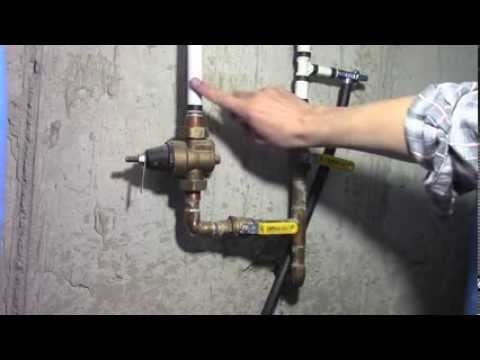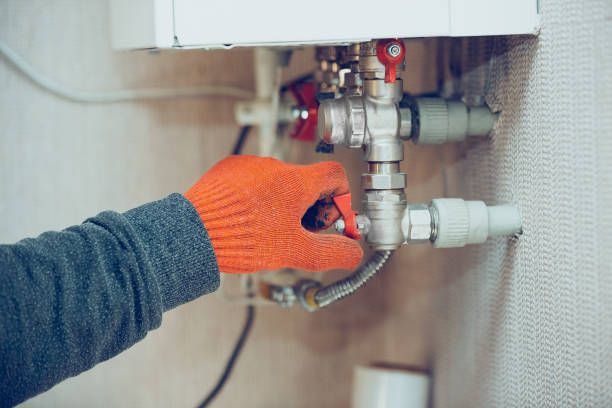Speedy Steps for Limited Water Pressure in Your Home
Speedy Steps for Limited Water Pressure in Your Home
Blog Article
On this page below you can find a lot of exceptional tips in relation to 10 Reasons for Low Water Pressure in Your House.

Low water stress in your home can be an irritating problem, influencing every little thing from showering to cleaning recipes. If you're experiencing weak water circulation, there are a number of feasible reasons and options to discover. In this guide, we'll discuss common reasons for low tide pressure and useful steps to attend to the concern successfully.
Introduction to Low Water Pressure
Low tide stress happens when the flow of water from your taps, showers, and other components is weaker than typical. This can make day-to-day jobs much more challenging and much less reliable. Comprehending the sources of low water stress is crucial to finding the appropriate service.
Usual Reasons For Low Water Stress
Faulty Stress Regulators
Stress regulatory authorities are responsible for keeping consistent water pressure in your home. If they malfunction, it can result in low tide stress or unequal circulation throughout your home.
Local Water Supply Issues
Sometimes, the problem lies outside your home. Municipal water supply problems, such as main line leakages or upkeep work, can momentarily lower water pressure in your location.
Pipe Obstructions
In time, pipes can become blocked with natural resource, sediment, or debris, restricting the circulation of water. This is a common problem in older homes with galvanized steel pipes.
Rust
Corrosion within pipelines can lead to leakages and lowered water stress. Rust build-up can constrict water flow, particularly in maturing plumbing systems.
How to Diagnose Low Tide Pressure
Examining Pipes
Examine visible pipes for signs of leakages, corrosion, or blockages. Focus on any kind of unusual audios, such as banging or rattling pipes, which could suggest concerns within the plumbing system.
Consulting with a Plumber
If you're unable to identify the reason for low water pressure, consider working with an expert plumber to conduct a detailed assessment. They can identify underlying concerns and advise proper options.
Examining Taps and Components
Begin by evaluating the water stress at various taps and fixtures throughout your home. If the concern is isolated to particular areas, it might indicate localized problems.
Do It Yourself Solutions to Repair Low Tide Stress
Flushing Hot Water Heater
Debris buildup in the water heater can restrict circulation and reduce effectiveness. Flushing the container regularly aids eliminate debris and maintain ideal performance.
Checking Pressure Regulator
Make certain that the pressure regulator is operating properly. Changing or changing the regulator can aid recover correct water pressure throughout your home.
Cleaning Aerators and Showerheads
Natural resources can build up in aerators and showerheads, minimizing water circulation. Eliminate and clean these components on a regular basis to boost water pressure.
Clearing Clogs in Water Lines
For minor clogs, try making use of a plumbing snake or chemical drainpipe cleaner to clear obstructions in pipelines. Be cautious when using chemicals and follow safety and security guidelines.
When to Call a Specialist Plumber
If DIY initiatives fall short to solve the issue or if you believe considerable plumbing troubles, it's finest to look for support from a certified plumber. They have the experience and tools to deal with intricate concerns safely and effectively.
Safety Nets to Maintain Water Pressure
Mounting a Pressure Booster
Consider installing a stress booster pump to improve water stress in locations with regularly low flow. This can be especially beneficial for multi-story homes or properties with high-demand components.
Monitoring Water Use
Bear in mind water use routines and stay clear of ill-using the plumbing system. Basic changes, such as incredible showers and laundry lots, can assist preserve ample water pressure.
Normal Upkeep
Schedule regular maintenance for your plumbing system to stop problems such as deterioration, leaks, and blockages. Attending to minor troubles early can assist avoid even more substantial fixings later.
Conclusion
Dealing with low water stress can be aggravating, but identifying the underlying causes and implementing proper services can restore optimum circulation throughout your home. Whether it's cleansing aerators, checking pipes, or seeking advice from a plumber, taking aggressive actions can ensure a steady supply of water for your daily demands.
FOUR WAYS TO FIX LOW WATER PRESSURE NOW
Turning on a shower or faucet only to find the water comes out in a sad, slow drizzle is never a good feeling. How exactly are you supposed to wash a pan or take a quick shower when it takes 10 minutes just to rinse off a little soap? The good news is that when your water pressure is bad, there's always a cause: typically one that can be easily fixed. Here are some of the most common causes of low pressure and what you can do to fix the issue:
DEBRIS AND MINERAL DEPOSIT BUILDUPS
If you notice low water pressure from just one or two of the fixtures in your house, the problem likely has to do with debris buildup. Water is full of minerals and other debris, all of which can accumulate in your pipes and on your fixtures. This can cause a blockage that affects how much water flows through. To fix this, try filling a small plastic bag with white vinegar, and use a rubber band to hang it around your showerhead or faucet. Let the head of the fixture soak for a few hours, and the vinegar should loosen the deposits.
WATER LEAKS
Leaks are another common cause of low water pressure. If water is flowing out of your plumbing through a hole or crack before it can reach your fixture, the pressure coming out of the faucet or showerhead will be lower. A plumbing professional is your best bet for finding and repairing a leak in your water supply pipes.
Leaks are another common cause of low water pressure. If water is flowing out of your plumbing through a hole or crack before it can reach your fixture, the pressure coming out of the faucet or showerhead will be lower. A plumbing professional is your best bet for finding and repairing a leak in your water supply pipes.
A VALVE ISSUE
If you have low water pressure throughout your home, check your main shut-off valve to make sure it's completely open. You may also want to see if there's a pressure-reducing valve installed. If there is, have a plumber help you adjust the settings to get the pressure you're looking for.
OTHERS USING WATER
Believe it or not, your low water pressure could be caused by your neighbors. If you notice low pressure at certain times of day, it may be because you and the people living next to you have similar schedules - when everyone is showering at the same time, the pressure will be lower in every home. Low pressure throughout the neighborhood may also be caused by an issue with your municipal water supply. If that's the case, call the supplier to see if they're working on the issue.
https://www.rotorooter.com/blog/water-leaking/low-water-pressure-fixes/

We hope you liked our article on 9 Reasons for Low Water Pressure in Your House. Thank you so much for taking a few minutes to read our posting. For those who appreciated our page plz consider to pass it around. Thanks for your time. Come back soon.
Pricing Report this page